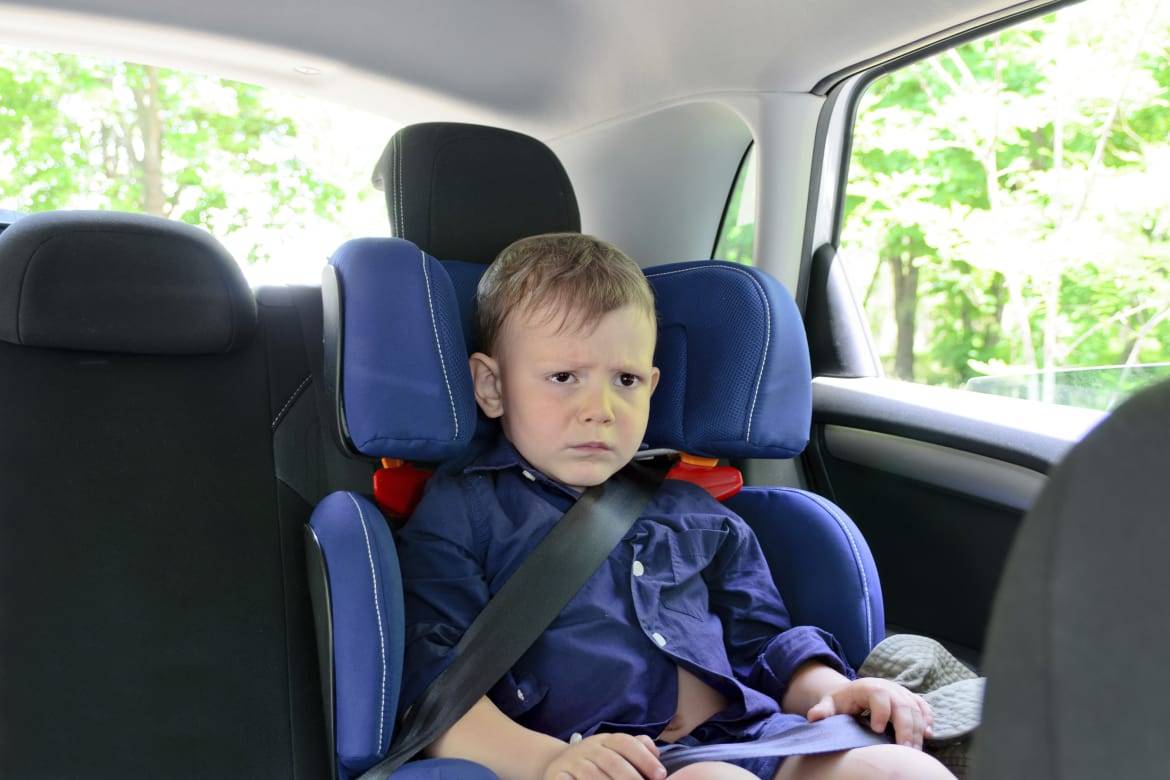Study Uncovers Common Car Seat Mistakes


When it comes to child-safety-seat installation and use, there’s a good chance that you’re doing it wrong. A nationwide field study of car-seat use and installation found that 46 percent of car seats were installed or used incorrectly, which is called a misuse by certified child passenger safety technicians.
Related: Car Seat Checks
With car-seat installation and use, it’s often the little things that lead to misuse. It could be that the car seat isn’t installed tightly enough and can move more than an inch when you wiggle it from side to side, or that the chest clip on an infant-safety seat or convertible seat is positioned higher or lower than the correct spot, armpit level.
Here are some of the most common misuses the study found:
Incorrect Recline Angle on Rear-Facing Car Seats
Misuse: The study found that 16 percent of rear-facing infant seats and 12 percent of rear-facing convertibles weren’t installed with the correct recline angle. These types of car seats must recline at an angle of 30 to 45 degrees, depending on the car-seat manufacturer’s recommendations.
What to Do: Infant-safety seats often have an adjustable foot that will help to maintain the correct recline angle for the car seat as well as a built-in level to show you’ve hit the correct angle. Convertible seats have recline angle indicators to help ensure they’re installed correctly.
Why It Matters: Positioning a rear-facing car seat with a 45-degree recline angle helps to keep the baby’s airway open, especially when an infant has little to no head control.
Loose Installation on Forward-Facing Car Seats
Misuse: Seventeen percent of forward-facing convertibles investigated in the study moved more than 2 inches from side to side at the belt path, where the seat belt or strap attached to the Latch anchors goes through the car seat and holds it in place.
What to Do: Every time you’re going to use a car seat, give the seat a firm tug at the belt path to see if it moves more than an inch. If it moves, push down on the car seat’s bottom cushion with one hand while pulling up on the Latch strap to tighten it with the other. It’s a good idea to get in the habit of testing this every time you’re going to use the car seat.
Why It Matters: A car seat that isn’t securely installed in a car won’t protect your child in a crash as well as one that is, which means making sure the installation isn’t too loose.
Tether Anchor Not Used on Forward-Facing Convertible
Misuse: Nearly 40 percent of forward-facing convertibles observed in this study were installed incorrectly because the convertible’s tether strap wasn’t connected to the tether anchor.
What to Do: The tether strap is found on the back of the convertible, at the top. Make sure to read both owner’s manuals — your car seat’s and car’s — to make sure you connect it correctly to the tether anchor, usually found on seatbacks, the car’s rear shelf, in the cargo floor or in the cargo-area ceiling. If you’re installing it in a pickup truck, read more on how to use tether anchors here.
Why It Matters: In a crash, the top tether strap reduces a car seat’s forward and side movement as well as the child’s head movement by 6 to 8 inches.
Lap Belt Sits on Child’s Abdomen When in Booster Seat
Misuse: In the study, 9 percent of kids in high-back booster seats and 12 percent in backless boosters were found to have the seat belt’s lap belt sitting across their tummy.
What to Do: A booster seat raises up a child to position a seat belt correctly across the lap and chest. Make sure the lap belt sits on the child’s upper thighs and the shoulder belt is on the chest and not the child’s neck.
Why It Matters: In a crash, a poorly positioned seat belt, especially the lap belt, can harm your child’s internal organs.
The National Child Restraint Use Special Study was conducted by the National Highway Traffic Safety Administration from June through August 2011 at 24 sites across the country. Certified child passenger safety technicians observed child restraint systems of newborns through 8-year-olds, and the drivers of the child passengers also were interviewed. Overall, 4,167 inspections and driver interviews were collected for the study.

Editor-in-Chief Jennifer Newman is a journalist with more than 25 years of experience, including 15 years as an automotive journalist at Cars.com. Jennifer leads the Editorial team in its mission of helping car shoppers find the vehicle that best fits their life. A mom of two, she’s graduated from kids in car seats to teens behind the steering wheel. She’s also a certified car-seat technician with more than 12 years of experience, as well as member of the World Car Jury, Automotive Press Association and Midwest Automotive Media Association. LinkedIn: https://www.linkedin.com/in/jennilnewman/ Instagram: @jennilnewman
Featured stories



